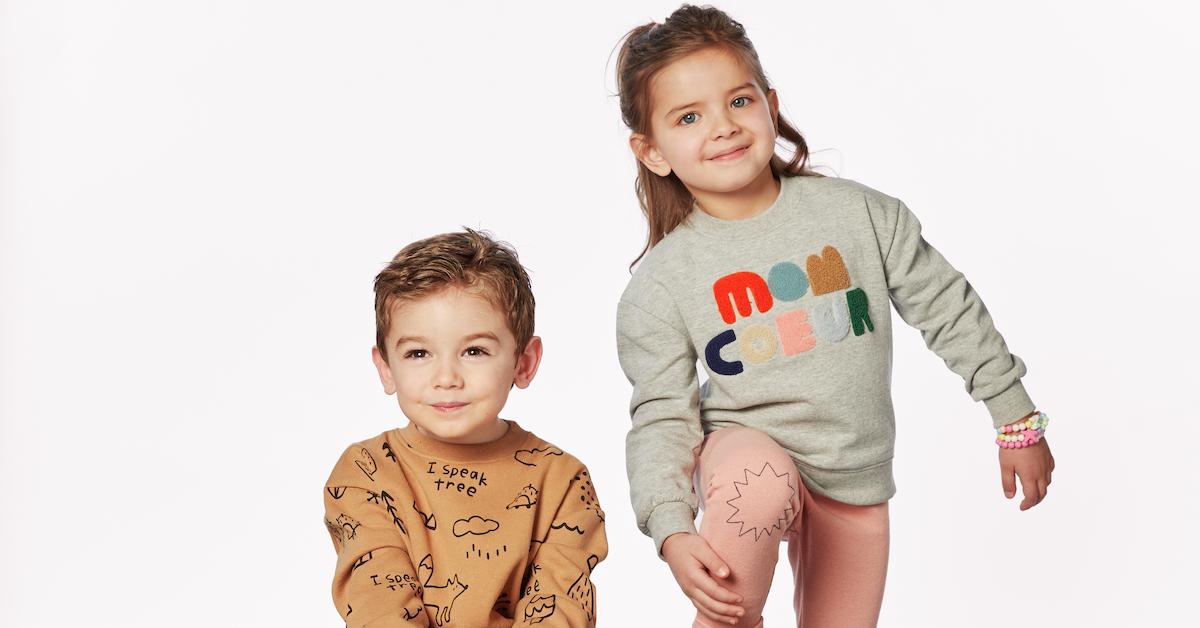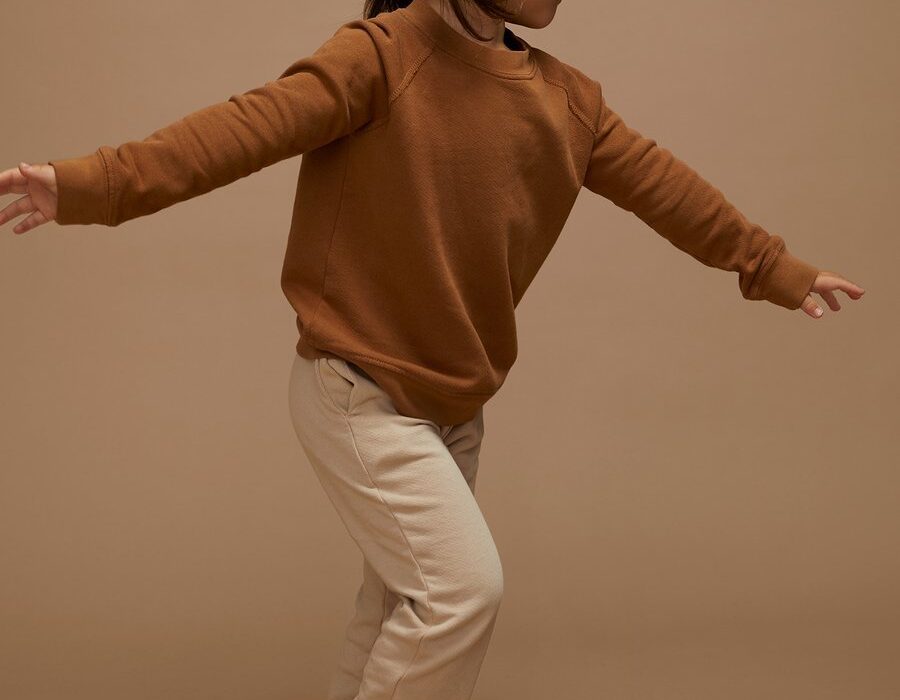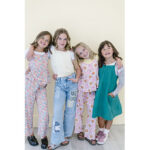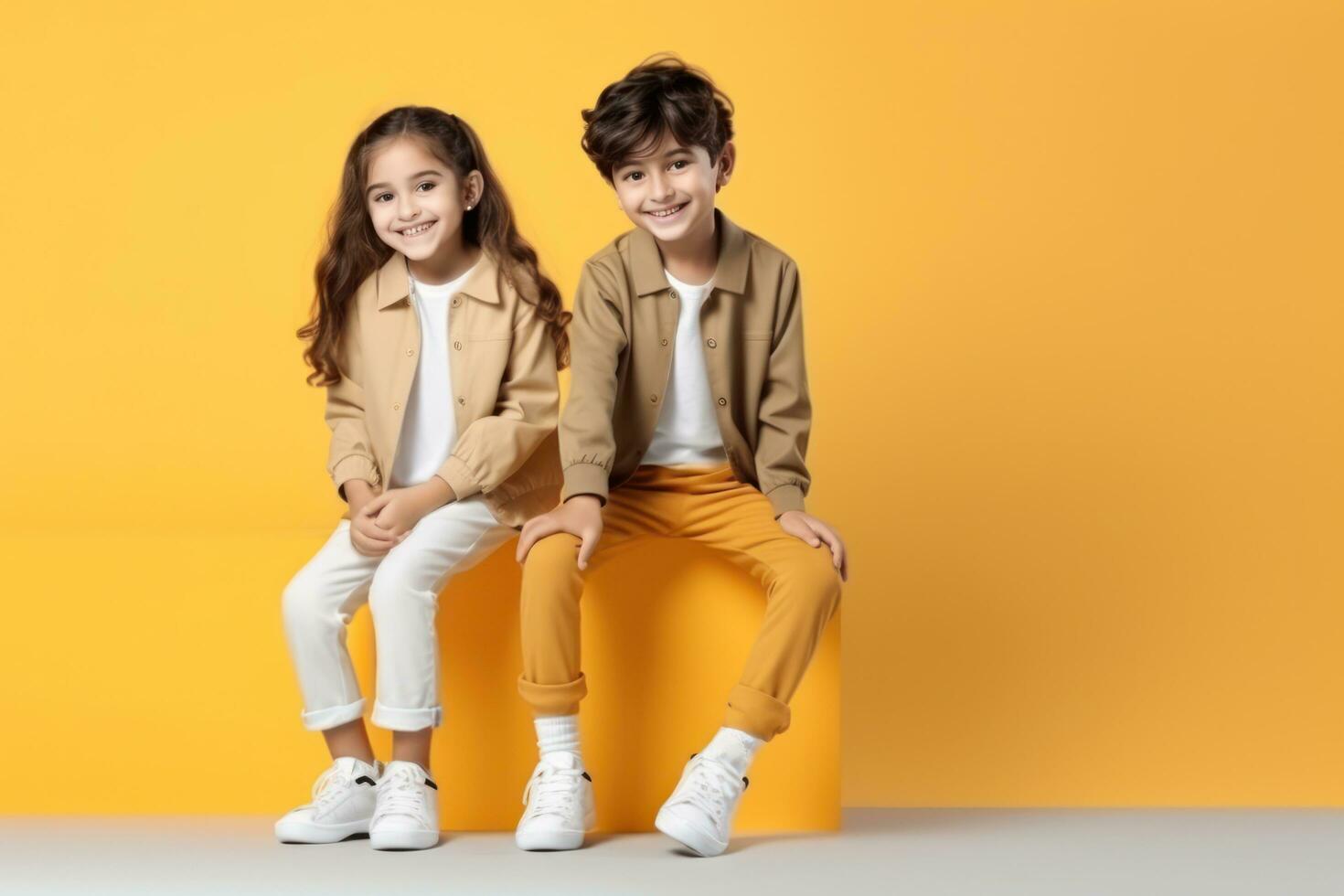Sustainable kids fashion is on the rise. By 2025, it will be even more important.
Parents today seek eco-friendly clothing for their children. They want styles that are both kind to the planet and stylish. As we move towards 2025, the demand for sustainable kids fashion continues to grow. Brands are now focusing on creating clothes that are good for the environment and safe for kids.
The future of children’s fashion looks green. This shift is not just a trend but a necessary change. Sustainable fashion for kids means healthier lives and a better planet. In this blog, we explore what sustainable kids fashion will look like in 2025. We’ll see how it benefits our children and the Earth.
Rise Of Sustainable Materials
In 2025, sustainable kids fashion sees a significant shift. Parents now prefer clothes that are kind to the planet. This change leads to the rise of sustainable materials. These materials are eco-friendly and safe for children. Let’s explore some popular sustainable materials.
Organic Cotton
Organic cotton is a popular choice in kids fashion. It is grown without harmful chemicals. This makes it safe for children’s sensitive skin. Organic cotton also uses less water than regular cotton. This helps conserve water resources. Here are some benefits of organic cotton:
- Soft and comfortable fabric
- Hypoallergenic, reducing skin irritation
- Biodegradable, reducing waste
Brands now create stylish, organic cotton outfits. These outfits are trendy and eco-friendly. Parents can feel good about their choices. Organic cotton is also durable. This means clothes last longer, saving money in the long run.
Recycled Fabrics
Recycled fabrics are another sustainable option. These fabrics are made from old clothes and plastic bottles. This process reduces waste and saves resources. Recycled fabrics are strong and versatile. They can be used to make various clothing items.
Here are some advantages of recycled fabrics:
- Reduces landfill waste
- Conserves natural resources
- Lowers carbon footprint
Many brands now use recycled fabrics in their collections. These clothes are stylish and practical. Parents can find everything from t-shirts to jackets made from recycled materials. Choosing recycled fabrics supports a circular economy. This helps create a more sustainable future.
| Sustainable Material | Benefits |
|---|---|
| Organic Cotton | Soft, Hypoallergenic, Biodegradable |
| Recycled Fabrics | Reduces Waste, Conserves Resources, Lowers Carbon Footprint |
Innovative Eco-friendly Designs
In 2025, sustainable kids fashion has taken a giant leap forward. Innovative eco-friendly designs are at the forefront of this green revolution. Designers focus on creating clothes that are kind to the planet. These designs not only look good but also help reduce waste and pollution.
Zero-waste Patterns
Zero-waste patterns are a significant trend in kids’ fashion. Designers use every bit of fabric. This method reduces waste and lowers production costs. Zero-waste patterns result in unique and creative clothing designs. Parents love these eco-friendly options for their children.
Multifunctional Clothing
Multifunctional clothing is another exciting development in sustainable kids fashion. These garments serve more than one purpose. For example, a jacket can turn into a backpack. This reduces the need for multiple items. It also saves space and resources. Kids find these multifunctional clothes fun and practical.
Ethical Production Practices
Ethical production practices in sustainable kids fashion are gaining attention in 2025. Parents seek to dress their children in clothes made responsibly. This shift is not just about the end product. It’s about the journey from raw materials to the finished item. Let’s explore how fair trade initiatives and local sourcing contribute to this ethical approach.
Fair Trade Initiatives
Fair trade initiatives ensure producers get fair wages. This is crucial for ethical kids fashion. Many brands now partner with fair trade certified factories. They verify that workers receive fair pay and work in safe conditions. Fair trade also means no child labor, which aligns with the values of kids fashion.
Some key benefits of fair trade initiatives include:
- Fair wages for workers
- Safe working environments
- No child labor
- Empowerment of local communities
Local Sourcing
Local sourcing involves obtaining materials from nearby locations. This reduces the carbon footprint of production. It also supports local economies. By choosing local materials, brands ensure that the supply chain is transparent and sustainable.
Here are some advantages of local sourcing:
- Reduced carbon footprint
- Support for local businesses
- Transparency in the supply chain
- Fresher, higher-quality materials
Brands that practice ethical production set a positive example. They show that it is possible to create beautiful, durable clothes without harming people or the planet.

Credit: redskelton-gallery.com
Gender-neutral Collections
Gender-neutral collections in sustainable kids fashion are gaining popularity in 2025. Parents and designers now embrace inclusive styles. These collections allow children to express themselves freely. They focus on comfort, quality, and sustainability. Gender-neutral fashion breaks traditional norms and promotes equality. It encourages children to explore their identities without restrictions.
Inclusivity In Fashion
Inclusivity in fashion means offering options for all children. It ensures no child feels left out. Gender-neutral collections cater to every child’s preferences. They provide styles that are not limited by gender. This inclusivity fosters a sense of belonging and acceptance. Kids can choose what they like without stereotypes.
Breaking Stereotypes
Breaking stereotypes is crucial in modern kids fashion. Traditional clothing often limits choices based on gender. Gender-neutral collections challenge these norms. They offer diverse styles and colors. This allows children to explore a wide range of options. It helps in building a more accepting and open-minded generation. Parents play a key role in supporting these choices.
Second-hand And Upcycled Fashion
In 2025, sustainable kids fashion is not just a trend. It’s a lifestyle. Parents are increasingly turning to second-hand and upcycled fashion. This choice is both eco-friendly and wallet-friendly. These options provide unique and personalized styles for children.
Thrift Store Popularity
Thrift stores have become very popular. They offer a wide range of clothes at affordable prices. Parents can find high-quality, gently-used clothing. These stores help reduce waste by giving clothes a second life. Many thrift stores now have dedicated sections for children’s fashion. This makes shopping easier and more enjoyable for parents.
Diy Upcycling Projects
DIY upcycling projects are a fun way to create unique clothes. Parents and kids can work together to transform old garments. This activity fosters creativity and teaches children about sustainability. Simple projects include adding patches, embroidery, or fabric paint to old clothes. More advanced projects can involve sewing and altering the garment’s shape.
Here are some easy upcycling ideas:
- Add colorful patches to jeans and jackets.
- Use fabric paint to create unique designs on t-shirts.
- Turn old sweaters into cozy hats and mittens.
Upcycling not only saves money but also reduces waste. It encourages a creative approach to fashion. Parents feel proud when their children wear something they made together. The kids enjoy wearing clothes that reflect their personal style. This trend is set to grow in the coming years, making second-hand and upcycled fashion a staple in sustainable kids fashion.
Tech Integration In Fashion
In 2025, sustainable kids fashion is taking new strides with tech integration. Technology is not just for gadgets anymore. It’s making clothes smarter, more durable, and eco-friendly. Here’s a look at how tech is changing kids’ fashion.
Smart Fabrics
Smart fabrics are leading the way in sustainable fashion. These fabrics can adjust to temperature changes. They help keep kids comfortable in any weather. Some fabrics even change color with temperature shifts. This reduces the need for multiple outfits.
These fabrics are also durable. They last longer than traditional fabrics. Parents save money and reduce waste. Smart fabrics are often made from recycled materials. This cuts down on new resource use.
Digital Wardrobes
Digital wardrobes are another exciting tech development. This concept involves using apps to manage kids’ clothes. Parents can scan and store details of each item. The app suggests outfits based on weather and activities.
Digital wardrobes also help track the life cycle of clothes. Parents know when an item needs repair or recycling. This promotes a more sustainable approach to fashion. It also makes it easier to keep track of what kids need.
With tech integration, kids’ fashion is becoming smarter and greener. Smart fabrics and digital wardrobes are just the start. The future of sustainable kids’ fashion looks bright.
Minimalist Wardrobes
In 2025, the trend of minimalist wardrobes for kids is gaining popularity. Parents are choosing fewer, better-quality pieces for their children. This not only reduces clutter but also promotes sustainability. Kids’ fashion is shifting towards simplicity and timelessness.
Capsule Collections
Capsule collections are small, curated wardrobes. Each piece in a capsule collection complements the others. This makes it easy to mix and match outfits. Parents save time and money by investing in versatile clothing. Capsule collections are perfect for growing children. They help in maintaining an organized and clutter-free closet.
Timeless Pieces
Timeless pieces are classic items that never go out of style. These clothes can be worn year after year. Neutral colors and simple designs make timeless pieces versatile. Parents prefer these pieces for their durability and long-lasting appeal. Timeless pieces also reduce the need for frequent shopping. They offer a sustainable solution for kids’ fashion.
Educational Initiatives
As we step into 2025, sustainable kids fashion is becoming more than just a trend. It’s a movement. One of the most exciting aspects is the rise of educational initiatives. These initiatives aim to teach children about sustainability and the importance of making eco-friendly choices. Through various programs, kids are learning how their fashion choices can impact the planet.
Eco-friendly Awareness
Schools and communities are focusing on eco-friendly awareness. Children are being taught the value of sustainable materials and practices. This awareness is being integrated into their daily lives through simple activities.
- Reading stories about the environment.
- Watching short films on sustainable living.
- Engaging in classroom discussions about waste reduction.
These activities are helping children understand why sustainable choices are important. They are learning that even small changes can make a big difference.
Sustainability Workshops
Sustainability workshops are another key component. These workshops are designed to be interactive and fun. Kids can participate in hands-on activities that teach them about sustainable fashion.
Some popular workshop activities include:
- Creating clothing from recycled materials.
- Learning to mend and repair old clothes.
- Designing outfits with eco-friendly fabrics.
By engaging in these workshops, children are not only learning valuable skills but also developing a deeper appreciation for the environment.
These educational initiatives are laying the foundation for a generation that values sustainability. Children are becoming more conscious of their choices and the impact they have on the world.
Collaborations With Eco-activists
In 2025, sustainable kids’ fashion is taking a big step forward. One exciting trend is the collaborations with eco-activists. These partnerships help spread awareness about the importance of eco-friendly clothing. They also inspire families to make better choices for the environment.
Celebrity Endorsements
Many celebrities are getting involved in sustainable kids’ fashion. They use their fame to highlight eco-friendly brands. For example, Emma Watson, a well-known advocate for sustainability, supports several kids’ fashion lines. These brands use organic materials and fair trade practices. Their involvement draws more attention to the cause.
| Celebrity | Brand | Eco-Friendly Practices |
|---|---|---|
| Emma Watson | Fair Kids | Organic Cotton, Fair Trade |
| Leonardo DiCaprio | Green Sprouts | Recycled Materials, Zero Waste |
These endorsements help families learn about sustainable options. They see their favorite stars supporting these brands and want to do the same.
Influencer Partnerships
Influencers also play a key role in promoting sustainable kids’ fashion. They have a strong connection with their followers. They share their experiences with eco-friendly clothing brands. Their honest reviews and tips make a big impact.
- Eco Mama: Shares daily tips on sustainable living with kids.
- Green Family: Reviews eco-friendly products and offers giveaways.
- Zero Waste Kids: Provides DIY projects for sustainable fashion.
Influencer partnerships help spread the message quickly. Families trust these influencers and follow their advice. This leads to more people choosing sustainable options for their children.

Credit: www.instagram.com
Sustainable Packaging Solutions
In 2025, sustainable kids’ fashion is more than just eco-friendly fabrics. It involves every aspect of the product, including packaging. Sustainable packaging solutions are gaining traction. These solutions aim to reduce waste and protect our environment.
Biodegradable Materials
Many brands use biodegradable materials for packaging. These materials break down quickly and safely. They don’t harm the environment. For example, some companies use plant-based plastics. These plastics decompose faster than traditional ones. Others use paper made from recycled sources. This reduces the need for new resources.
Using biodegradable materials helps reduce landfill waste. It also decreases pollution. Families can dispose of packaging with less guilt. Brands that use these materials show their commitment to sustainability.
Reusable Packaging
Reusable packaging is another popular trend. Some brands offer packaging that serves a second purpose. For instance, fabric bags can be used for storage. Boxes can be turned into fun crafts for kids. This reduces waste and provides extra value.
Parents appreciate reusable packaging. It offers a practical solution to waste. Kids enjoy the creative possibilities. Brands that adopt reusable packaging stand out. They show innovation and care for the environment.
Consumer Behavior Shifts
Consumer behavior shifts have significantly impacted the sustainable kids fashion industry in 2025. Parents now prioritize eco-friendly choices. They prefer quality over quantity. This new mindset has changed how families shop for children’s clothes. Let’s explore these changes in detail.
Mindful Purchasing
Parents are now more mindful when buying kids’ clothes. They consider the environmental impact of their purchases. Many choose fewer, higher-quality items that last longer. This approach reduces waste and saves money in the long run.
Families also focus on the origins of the materials used. Organic cotton and recycled fabrics are popular choices. They want to know that their purchase does not harm the planet. This shift towards conscious consumerism is growing stronger each year.
Support For Ethical Brands
Ethical brands are gaining support from parents. They seek out companies with transparent practices. These brands often use sustainable materials and fair labor practices. Supporting them feels like making a positive impact.
Many parents research brands before buying. They read reviews and check certifications. Trustworthy labels and certifications make a big difference. Parents want to ensure their money supports ethical businesses.
Some families even choose to buy second-hand clothes. Thrift stores and online resale platforms are becoming popular. This choice supports a circular economy. It also teaches children the value of reusing and recycling.
Government Regulations
The world of sustainable kids fashion in 2025 has evolved. Government regulations now play a crucial role in ensuring that children’s clothing is both eco-friendly and safe. These regulations ensure that brands adhere to specific standards, promoting a healthier environment for future generations.
Sustainability Standards
Governments have introduced sustainability standards that every brand must follow. These standards cover various aspects, including:
- Materials used
- Production processes
- Waste management
Brands must use organic or recycled materials. They must also ensure that their production processes minimize environmental impact. Waste management practices are also regulated to reduce pollution and promote recycling.
Green Certifications
To ensure compliance, governments have introduced green certifications. These certifications help consumers identify truly sustainable brands. Some of the key certifications include:
- GOTS (Global Organic Textile Standard)
- OEKO-TEX Standard 100
- Fair Trade Certified
GOTS ensures that textiles are organic and produced under fair conditions. OEKO-TEX Standard 100 certifies that products are free from harmful substances. Fair Trade Certified ensures fair wages and safe working conditions for workers.
Brands with these certifications are recognized for their commitment to sustainability. Parents can trust that these brands provide safe and eco-friendly clothing for their children.
Future Of Kids Fashion
The future of kids fashion is exciting and eco-friendly. By 2025, sustainable practices will be at the forefront. Parents and designers alike are looking for ways to reduce waste and promote ethical choices. Let’s explore some anticipated trends and innovative concepts in kids fashion.
Anticipated Trends
Kids fashion trends in 2025 will focus on sustainability and durability. Here are some key trends:
- Eco-friendly fabrics: Organic cotton, bamboo, and recycled materials will be popular.
- Gender-neutral clothing: More brands will offer unisex options.
- Minimalist designs: Simple and timeless pieces will be favored.
- Second-hand fashion: Thrifted and upcycled clothes will gain popularity.
Innovative Concepts
Designers are coming up with creative ideas to make kids fashion more sustainable. Some of these concepts include:
- Growth-adaptive clothing: Clothes that adjust in size as kids grow.
- Subscription boxes: Monthly boxes with eco-friendly clothing options.
- Smart fabrics: Materials that are stain-resistant and long-lasting.
- Ethical production: Ensuring fair wages and safe working conditions.
| Trend | Description |
|---|---|
| Eco-friendly fabrics | Using organic and recycled materials |
| Gender-neutral clothing | Unisex designs for all kids |
| Minimalist designs | Simple and timeless fashion |
| Second-hand fashion | Thrifted and upcycled clothes |
As we move towards 2025, the future of kids fashion looks bright and green. These trends and concepts will shape a more sustainable world for our children.

Credit: redskelton-gallery.com
Frequently Asked Questions
What Is Sustainable Kids Fashion?
Sustainable kids fashion uses eco-friendly materials. It focuses on fair labor practices. It reduces environmental impact.
Why Is Sustainable Kids Fashion Important?
It protects the environment. It ensures fair wages for workers. It promotes healthier lifestyles for children.
How Can I Find Sustainable Kids Clothing?
Look for eco-friendly labels. Check brand’s sustainability practices. Shop from known ethical brands.
Are Sustainable Kids Clothes More Expensive?
Sometimes they cost more. But they are higher quality. They last longer and are better for the planet.
What Materials Are Used In Sustainable Kids Fashion?
Organic cotton, bamboo, and recycled fabrics. These materials are eco-friendly and safe for kids.
Conclusion
Sustainable kids fashion in 2025 is both trendy and responsible. Parents can make eco-friendly choices for their children. This not only helps the environment but also teaches kids valuable lessons. Choosing sustainable clothing supports ethical brands. It promotes a healthier planet for future generations.
Everyone can contribute to a greener world through mindful fashion choices. Let’s embrace sustainable kids fashion. Every small step counts towards a brighter, cleaner future.







